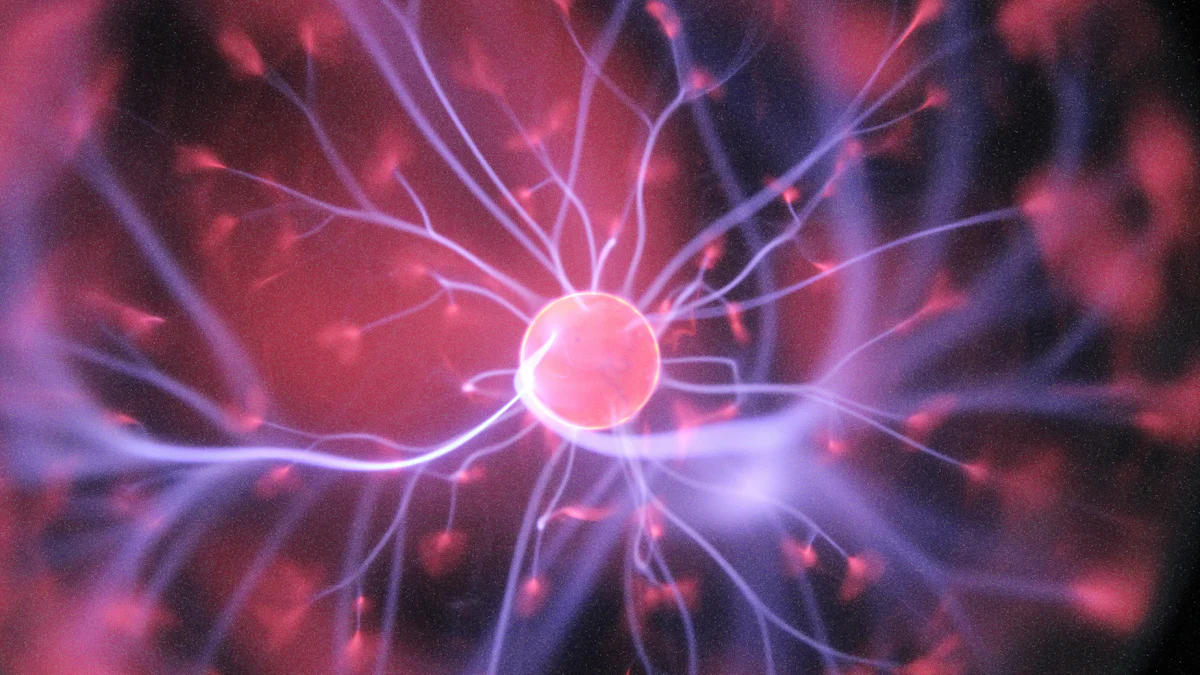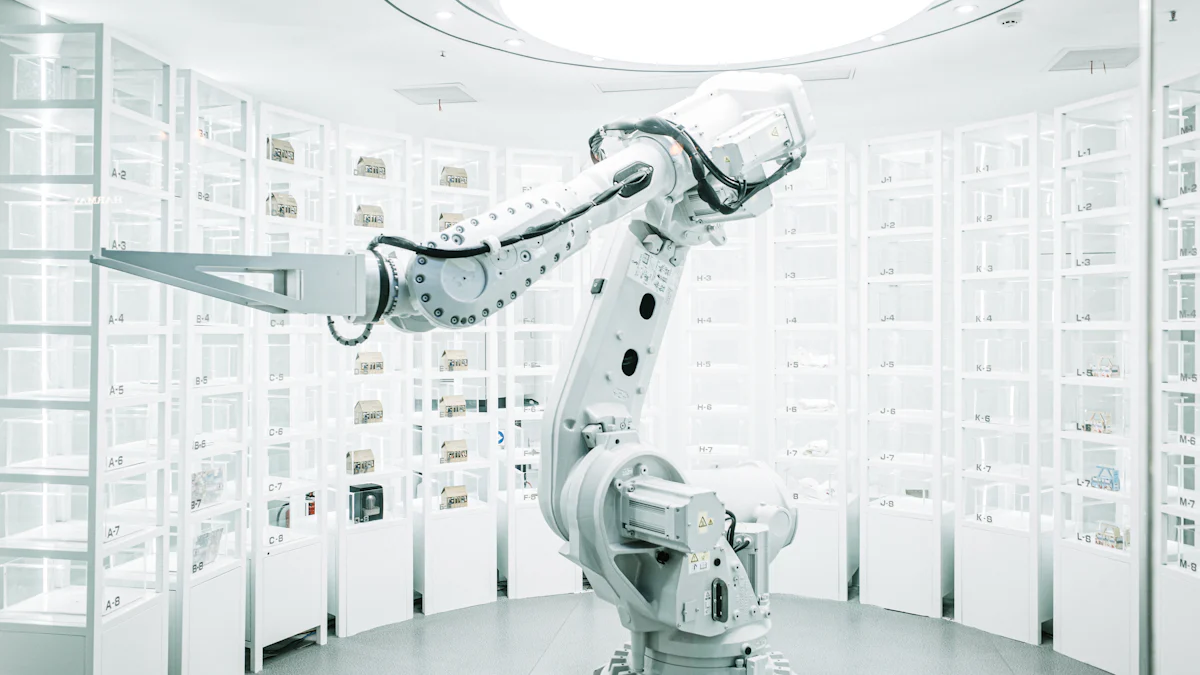Science: The Definitive Visual Guide

Science offers a fascinating journey through history. You explore the evolution of scientific thought and innovation. Each discipline unveils unique stories and discoveries. Visual aids play a crucial role in this exploration. They transform complex ideas into understandable concepts. Visualization enhances learning by revealing intricate details. You gain a deeper understanding of scientific principles. This approach supports knowledge growth and mastery. Science becomes more accessible and engaging. The visual representation of information enriches your educational experience. You encounter groundbreaking moments with clarity and insight.
The Dawn of Science
Early Astronomy

Ancient Observations
Ancient astronomers from various cultures made significant observations. Historical records include many star charts that reveal efforts to map the night sky. These early observations aimed to understand the universe's mechanics. Assyro-Babylonians documented systematic astronomical observations around 1000 BCE. Astronomy reached a high level of sophistication and predictive ability. Early cultures identified celestial objects with gods and spirits. These objects related to phenomena such as rain, drought, seasons, and tides. The ancient Greeks contributed significantly to astronomy and mathematics. Eratosthenes calculated Earth's circumference in 240 BCE.
The Copernican Revolution
The Copernican Revolution marked a pivotal shift in astronomical thought. Nicolaus Copernicus proposed a heliocentric model of the solar system. This model placed the Sun at the center, challenging the geocentric view. The heliocentric theory revolutionized the understanding of planetary motion. Galileo Galilei used a telescope to observe celestial bodies, supporting Copernicus's ideas. These observations provided evidence for the heliocentric model. The Copernican Revolution laid the foundation for modern astronomy. This period marked the beginning of a new era in scientific exploration.
Foundations of Biology
Early Classification Systems
Early scientists developed classification systems to organize living organisms. Aristotle created one of the first classification systems based on observable traits. This system grouped animals by characteristics like habitat and movement. Carl Linnaeus later refined classification with a binomial nomenclature system. This system assigned two-part Latin names to species. Linnaeus's work established a standardized method for naming organisms. These early systems laid the groundwork for modern taxonomy. Classification became essential for understanding biological diversity.
The Discovery of Cells
The discovery of cells transformed biological Science. Robert Hooke first observed cells in 1665 using a microscope. Hooke described cells as tiny compartments in cork tissue. Anton van Leeuwenhoek advanced microscopy by observing living cells. Leeuwenhoek discovered microorganisms, revealing a hidden world. The cell theory emerged, stating that all living things consist of cells. This theory became a fundamental principle of biology. The discovery of cells paved the way for advances in cellular biology. Understanding cells enhanced knowledge of life processes.
The Age of Enlightenment
Advances in Physics

Newtonian Mechanics
Isaac Newton transformed physics with his groundbreaking work. Newton's laws of motion provided a clear framework for understanding movement. These laws explained how objects interact through forces. Newton's work laid the foundation for classical mechanics. The concept of gravity emerged from his studies, explaining planetary orbits. Newton's discoveries allowed scientists to predict celestial movements accurately. This era marked a significant leap in scientific understanding.
The Birth of Thermodynamics
The study of heat and energy began to take shape during this period. Scientists explored how heat transfers between systems. The principles of thermodynamics emerged from these studies. Researchers discovered that energy cannot be created or destroyed. This concept became known as the conservation of energy. Thermodynamics connected with Newtonian mechanics through unified theories. These theories explained irreversible processes in solid systems. The birth of thermodynamics revolutionized how people understood energy.
Progress in Chemistry
The Periodic Table
Dmitri Mendeleev introduced the periodic table in the 19th century. Mendeleev organized elements based on atomic weight and properties. This arrangement revealed patterns among elements. The periodic table allowed scientists to predict undiscovered elements. Mendeleev's work provided a systematic approach to studying chemistry. The periodic table remains a fundamental tool in chemical research.
Chemical Bonding Theories
Scientists explored how atoms bond to form molecules. Early theories focused on the sharing or transfer of electrons. These ideas explained the formation of chemical compounds. Researchers developed models to represent atomic interactions. Chemical bonding theories enhanced the understanding of molecular structures. These theories continue to guide modern chemistry research.
Breakthroughs in Geology
Plate Tectonics Theory
Scientists developed the Plate Tectonics Theory to explain Earth's dynamic surface. Researchers used mathematical modeling to understand tectonic plates' origins and behavior. These plates move and interact, causing earthquakes and volcanic activity. The theory transformed geology by explaining continental drift and mountain formation. Geologists now predict natural disasters more accurately.
Understanding Earth's History
Geologists study rock layers to uncover Earth's history. Fossils within these layers reveal past life forms and environmental changes. Radiometric dating helps determine the age of rocks. This method uses the decay of radioactive isotopes. Understanding Earth's history provides insights into climate change and evolution. Geologists continue to explore these ancient records.
Innovations in Mathematics
Calculus Development
Mathematicians like Isaac Newton and Gottfried Wilhelm Leibniz developed calculus. This branch of mathematics studies change and motion. Calculus allows scientists to model natural phenomena. Engineers use calculus to design structures and systems. The development of calculus revolutionized scientific research and technology.
The Rise of Statistics
Statistics emerged as a powerful tool for analyzing data. Researchers collect and interpret data to make informed decisions. Statistics help identify patterns and trends in various fields. Businesses use statistics to improve products and services. The rise of statistics enhances understanding in economics, medicine, and social sciences.
The 20th Century and Beyond
Revolutionary Discoveries
Quantum Mechanics
Quantum mechanics emerged as a groundbreaking field in the 20th century. Scientists developed this theory to explain phenomena at the atomic and subatomic levels. Quantum mechanics challenged classical physics by introducing concepts like wave-particle duality. Researchers discovered that particles exhibit both wave-like and particle-like properties. This discovery revolutionized the understanding of matter and energy.
Scientific Research Findings:
Quantum mechanics plays a role in biological processes, including DNA mutations.
Protons can jump across energy barriers, leading to DNA mismatches and mutations.
These quantum effects in DNA suggest potential epigenetic impacts.
Quantum mechanics continues to influence various scientific fields. Researchers explore its applications in technology, medicine, and computing. Quantum computing promises to revolutionize data processing and problem-solving.
The Theory of Relativity
Albert Einstein introduced the theory of relativity in the early 20th century. This theory transformed the understanding of space, time, and gravity. Einstein's work included the special and general theories of relativity. The special theory addressed the behavior of objects moving at high speeds. The general theory explained gravity as the curvature of spacetime caused by mass.
Einstein's theories provided new insights into the universe. Scientists used relativity to predict phenomena like black holes and gravitational waves. These predictions have been confirmed through observations and experiments. The theory of relativity remains a cornerstone of modern physics.
Biological Innovations
DNA Structure Discovery
The discovery of DNA's structure marked a pivotal moment in biology. James Watson and Francis Crick identified the double helix structure in 1953. This discovery revealed how genetic information is stored and transmitted. The double helix model showed how DNA replicates and encodes proteins.
Scientific Research Findings:
Quantum mechanics could explain spontaneous DNA mutations.
Modifications in DNA bonds occur more frequently than previously thought.
These findings highlight the complex interactions within DNA molecules.
Understanding DNA's structure paved the way for advances in genetics. Researchers now explore the genetic basis of diseases and traits. DNA analysis has become essential in fields like medicine, forensics, and anthropology.
Genetic Engineering
Genetic engineering emerged as a transformative technology in the late 20th century. Scientists developed techniques to modify an organism's genetic material. These techniques include gene editing, cloning, and recombinant DNA technology. Genetic engineering allows researchers to enhance or suppress specific traits.
This technology has numerous applications in agriculture, medicine, and industry. Scientists create genetically modified crops with improved resistance to pests and diseases. In medicine, gene therapy offers potential treatments for genetic disorders. Genetic engineering continues to evolve, raising ethical and societal questions.
Contemporary Scientific Advancements

Cutting-edge Technologies
Gravitational Wave Detection
Gravitational wave detection has transformed the understanding of the universe. Scientists use advanced technologies to observe ripples in spacetime. These waves result from massive cosmic events like black hole collisions. Researchers employ laser interferometers to capture these subtle signals. Instruments like LIGO and Virgo have detected several gravitational waves.
Scientific Research Findings:
AI-driven Gravitational Wave Detection: AI techniques show promise in detecting gravitational wave signals. Deep learning plays a significant role in analyzing data. AI enhances the speed and accuracy of gravitational wave detection.
Artificial Intelligence in Science
Artificial intelligence revolutionizes scientific research. AI algorithms analyze vast amounts of data quickly. Scientists use AI to model complex systems and predict outcomes. AI assists in drug discovery by identifying potential compounds. Researchers apply AI in climate modeling to forecast environmental changes.
Scientific Research Findings:
AI in Gravitational Wave Analysis: AI applications in gravitational wave astronomy showcase advancements. AI improves the precision of data analysis in this field.
Future Prospects
Space Exploration
Space exploration continues to push boundaries. Agencies like NASA and ESA plan missions to distant planets. Scientists aim to explore Mars and beyond. Spacecraft and rovers gather data from various celestial bodies. These missions seek to uncover the mysteries of the solar system.
Scientific Research Goals:
Develop technologies for long-duration space travel.
Study the potential for life on other planets.
Understand the origins of the universe through deep-space observations.
Sustainable Technologies
Sustainable technologies address global challenges. Researchers focus on renewable energy sources like solar and wind. Innovations in battery storage improve energy efficiency. Scientists develop materials that reduce environmental impact. Sustainable practices aim to combat climate change.
Scientific Research Goals:
Increase the efficiency of solar panels.
Develop biodegradable materials for everyday use.
Implement smart grids for better energy distribution.
Scientific developments have shaped the world. Each discovery has contributed to understanding nature. Visual aids have enhanced learning by making complex concepts clear. These tools support arguments in science education. The relevance of past discoveries to contemporary advancements remains significant. Modern technologies build on foundational knowledge. Continued exploration inspires future breakthroughs. Curiosity drives scientific progress. New discoveries await those who seek them. Science invites you to explore and learn. Embrace the journey of discovery. The logic of discovery fuels scientific exploration. This process encourages innovation and growth.
See Also
Visual Art: The Ultimate Guide to Masterpieces
Visual Design: The Ultimate Guide to Creativity
Visual Inventions: An Encyclopedia of Innovation

